Search Images
Browse Content
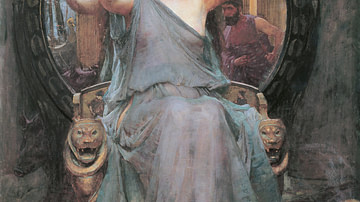
Image
Circe
A 19th century CE painting by John William Waterhouse depicting the sorceress Circe of Homer's Odyssey offering a cup of magic potion to Odysseus. (Oldham Gallery, UK)
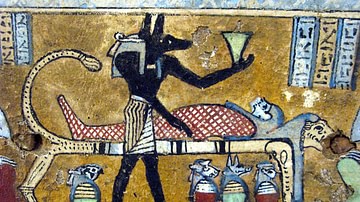
Image
Anubis, Egyptian Sarcophagus
A scene from a wooden Egyptian sarcophagus depicting Anubis, the god of mummification and the afterlife. c. 400 BCE
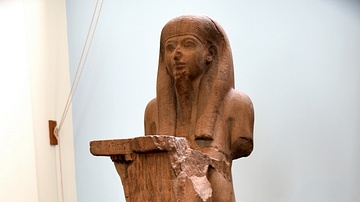
Image
Statue of the Nile God Hapy
The fleshy body symbolizes the Nile's fertility. Hapy holds a table of offerings, from which hang geese, quails, lotuses, pomegranates, and grapes. He presents his produce to Amun-Ra, in whose principal temple this statue stood. A relief...
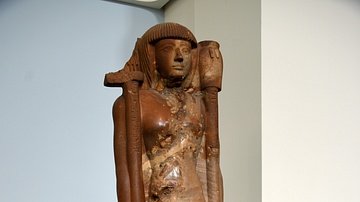
Image
Statue of Prince Khaemwaset
The prince holds two sacred standards. In his left hand is a fetish (sacred emblem) kept in Abydos and linked to Osiris. Atop the other stood figures of Osiris, Isis and Horus. Prayers on the back-pillar invoke Osiris. The text around the...
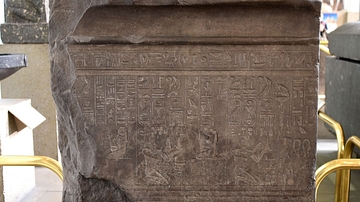
Image
Screen Slab of King Psamtek I
On this side, Psamtek (Psamtik) I kneels making offerings to fearsome-looking deities, including a double-headed bull god and a snake. The majority hold long knives, as they were meant to guard a sacred space located behind this wall. Most...
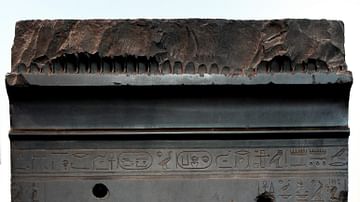
Image
Screen Slab of King Nectanebo I
This slab enclosed a sacred spot in the temple of Atum, a creator god, Heliopolis. King Nectanebo I is shown kneeling and making offerings. In this scene, he presents a loaf of bread. On the other side (now damaged), he appeared in the company...
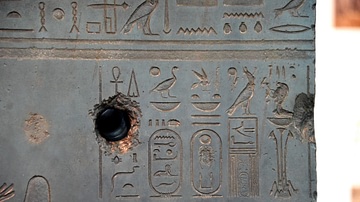
Image
Detail of the Screen Slab of King Nectanebo I
This detail shows the cobra goddess Wadjyt empowering king Nectanebo I, who is represented by his Horus name and cartouches. A pharaoh had five official names; this panel, shows the most important three. The Horus name identifies the king...
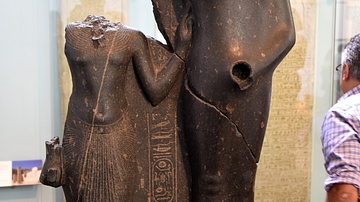
Image
King Horemheb with Amun-Ra
The inscriptions identify the headless king as Horemheb and the larger god as Amnu-Ra, here shown in his fertility aspect. The deity's phallus, now lost, was made separately. The statue was perhaps usurped from Tutankhamun, whose short reign...
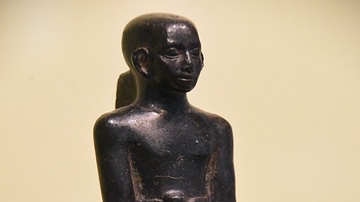
Image
Statue of Nebhepetra
This serpentine statue comes from the lost tomb of Nebhepetra. It shows him in prayer, with arms extended. The long inscriptions on his robe and on the back pillar reveal an extraordinary career as a lector and a guard. 12th Dynasty, probably...
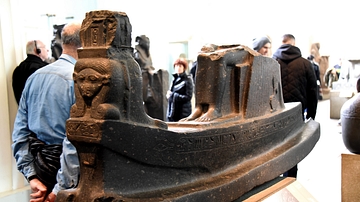
Image
Boat of Queen Mutemwia
This sculpture represents a sacred boat on a sledge. It included a seated figure of Queen Mutemwia, wife of Thutmose IV. Only her legs and right hand remained intact, but part of the head is also in the British Museum. Mutemwia clasps a looped...